Ulrich Imboden Shows How to Pave in a Tunnel
BY Ammann Group
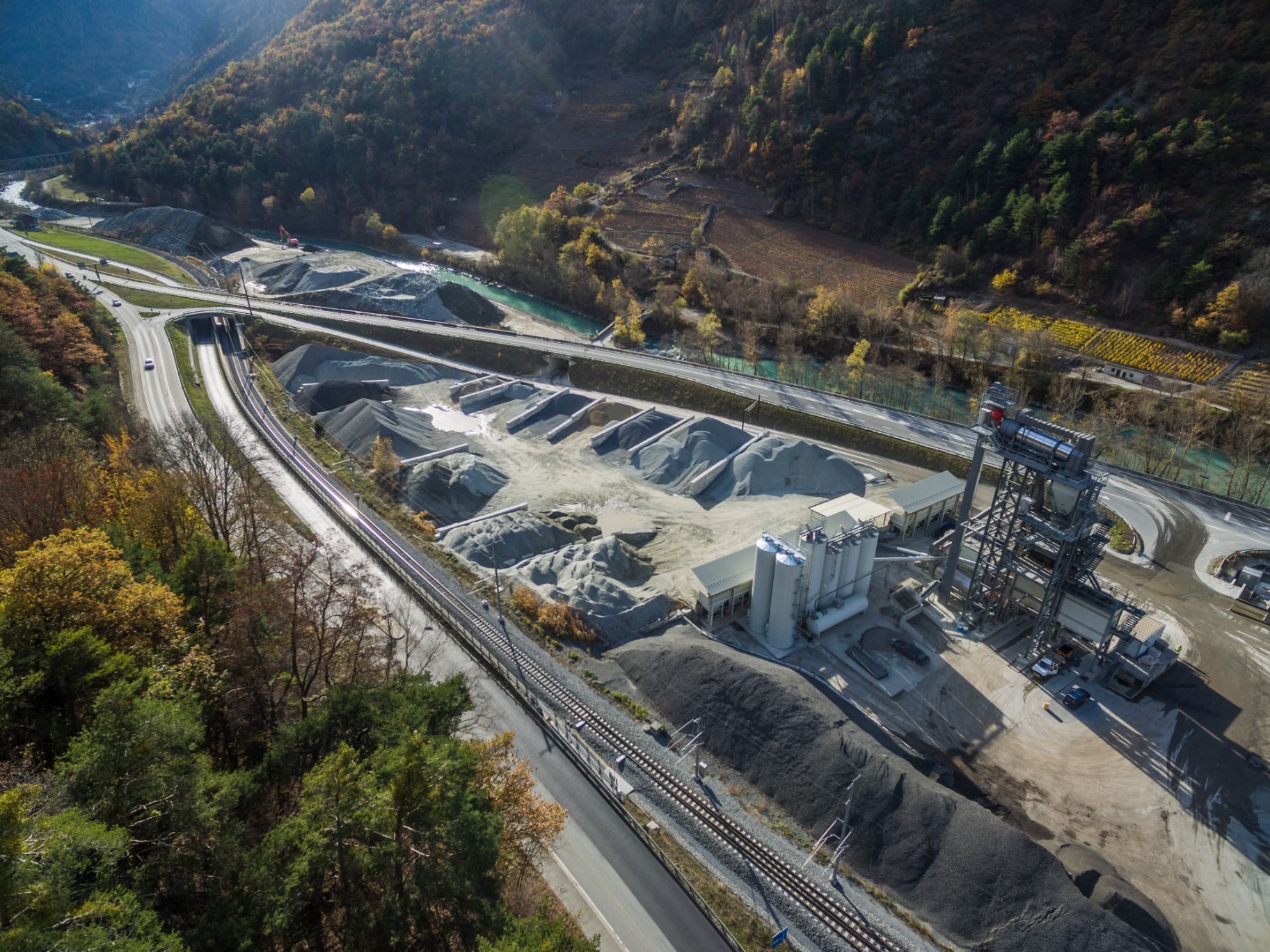
Work on the A9 motorway in the Valais canton between Siders and Brig—approximately 20 miles (32 kilometers) long—is a challenging project on many fronts. With a revised alignment, the route is designed to bundle the traffic lanes as efficiently as possible given the narrowness of the Rhône valley. About 50 percent of the new A9 motorway route through the Upper Valais runs underground, which makes the construction work particularly difficult. Ammann machinery, in the form of an asphalt mixing plant, a road paver, and vibratory and pneumatic tired rollers, supported the demanding paving work in the tunnel. A consortium of businesses named ARGE ATV took on the multi-phased project. Ulrich Imboden AG handled the paving portion of the roadbuilding.
A canton in Switzerland is a state or district. The Swiss confederation consists of 26 cantons.
The Valais, a mountainous canton, has topographically little space and few location choices for upgrading major transportation routes, given the constrictions of the Rhône valley. Successfully extending this motorway, without isolating the canton from the rest of Switzerland, is a difficult task. Construction of the new A9 circumvents the problem by including numerous tunnels and improves connections between the whole Valais region and Switzerland’s national road network.
Routing Through Tunnels
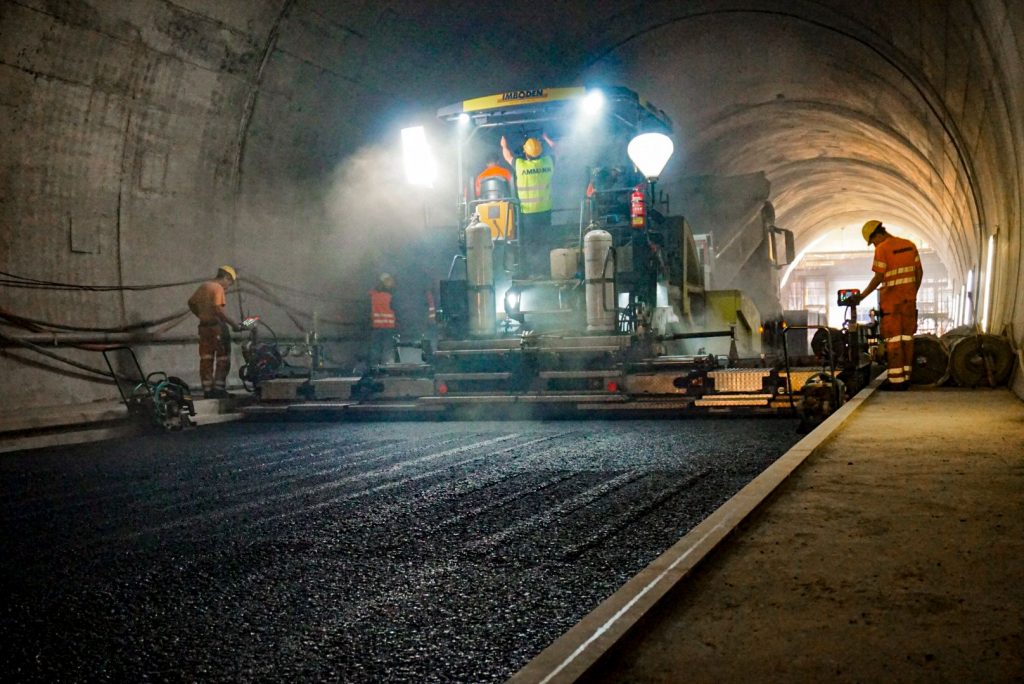
The crew arranged ventilation to move fumes away from workers and out of the tunnel, adjusting the ventilation when wind changed direction in the Valais.
The construction site is 19.76 miles (31.8 km) long in total and is fraught with challenges. For example, two tunnels linked by a bridge take drivers on a route some 4.3 miles (7 km) long around the town of Visp. The asphalt paving crew faced huge challenges here. First, the Swiss authorities stipulate maximum standards for paving quality in road tunnels to extend intervals between servicing work. Second, the high volume of traffic on this section will severely impact the pavement.
This means the work of laying the asphalt paving must be of the highest quality. For the surface layer, a special mix formula with polymer-modified bitumen (PMB) was used for its robust nature. Because of its high quality requirements and its special composition, this layer also necessitated particularly high compaction standards. Achieving this quality required an experienced crew and machinery ideally matched to operate together throughout the process.
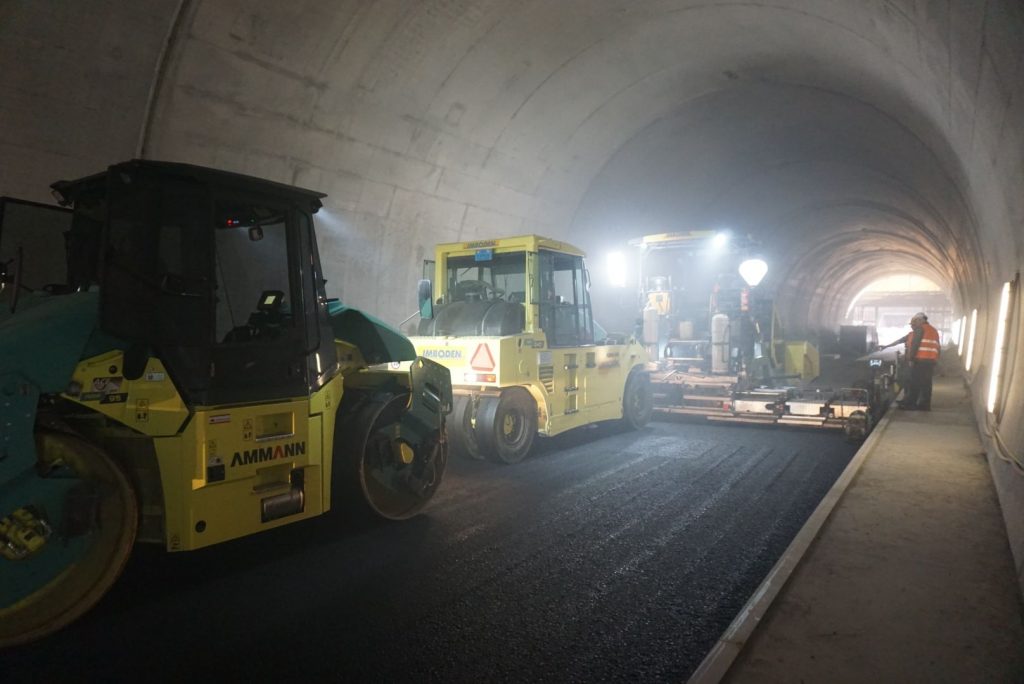
An ARP 95 pivot-steer tandem roller with Ammann Compaction Expert (ACE) technology and an AP240 pneumatic tired roller worked behind the paver to get compaction of the polymer-modified mix.
Work in the tunnel had even more complications for the paving crew from Ulrich Imboden AG. Because asphalt fume won’t easily disperse inside a tunnel, the crew arranged its ventilation carefully at the asphalt paving stage. Because the wind in the Valais constantly changes direction, the ventilation system was repeatedly adjusted to extract vapours from the tunnel.
At the Heart of the Process Chain
Since 2004, Ulrich Imboden AG has been operating a stationary Ammann asphalt mixing plant in the immediate vicinity of the tunnels. The plant is an Ammann Global 160, which in 2018 was fitted with an RAH feed to process recycled asphalt pavement (RAP).
The proximity of the construction site was ideal. Lorries took only a few minutes to transport the mix from the plant to the paver. In terms of its output, the plant must always be well geared to the day-to-day needs of the asphalt paver. Ultimately, the AFT 700-3 paver from Ammann was the “heart” and so dictated the pace of the whole paving process. Because of its size, the AFT 700-3 from Ammann can pave across the entire width of the 24-foot (7.3-meter) wide carriageway in a single pass. This eliminates the need for joints in the layer.
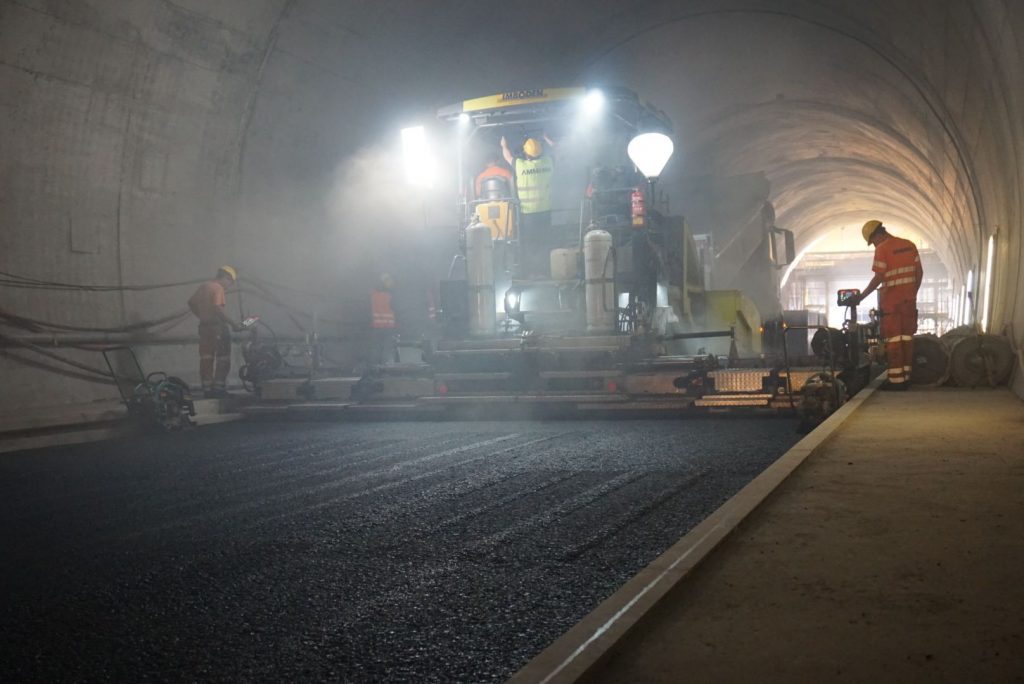
The Imboden crew used the AFT 700-3 paver across the width of the 24-foot-wide carriageway in a single pass, eliminating the need for joint construction.
In this sort of construction project, the entire paving crew is expected to work with maximum precision and productivity to be on top of the work in the mandated timeframe. This required precise coordination of the various work flows and a thoroughly experienced, highly skilled team.
High-Level Compaction and Fast Paving
An ARP 95 pivot-steer tandem roller with Ammann Compaction Expert (ACE) technology and an AP240 pneumatic tired roller, both from Ammann, worked behind the paver. The latter has a higher static weight than the tandem roller, with its pneumatic action creating a “kneading” effect that increased the compaction performance.
ACE is the company’s proprietary Intelligent Compaction system, and is a key piece of the puzzle. This built-in, automatic compaction control shows the machine operator the current compaction status as he works. This enables him to avoid unnecessary repeat passes and to monitor the degree of compaction achieved in every section. Finally, this saves both valuable time and fuel and also eliminates the need for expensive reworking.
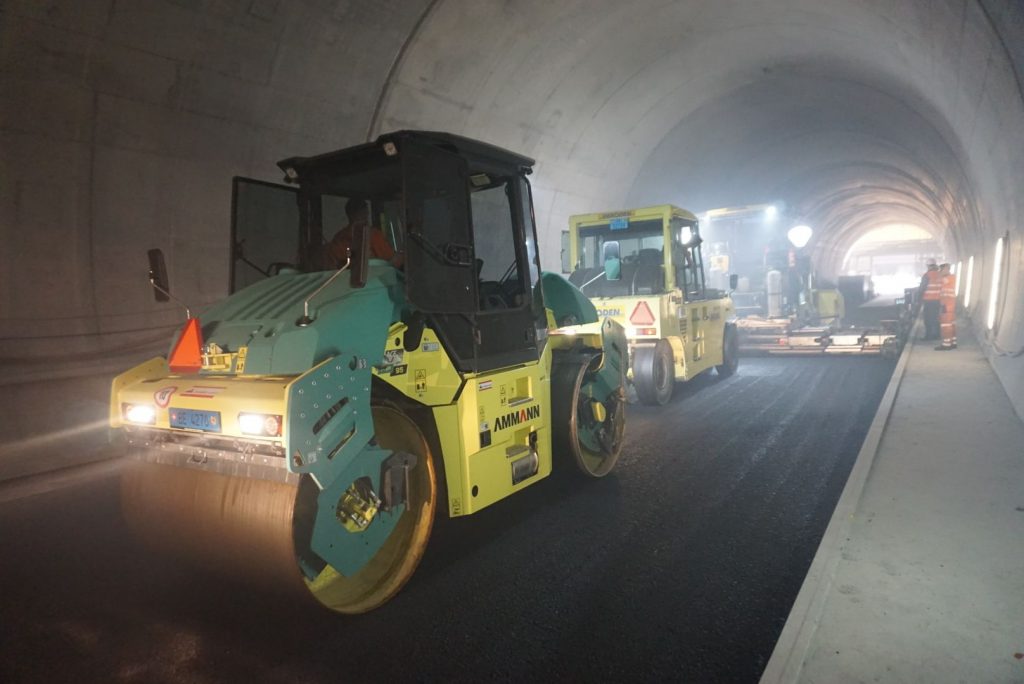
An ARP 95 pivot-steer tandem roller with Ammann Compaction Expert (ACE) technology and an AP240 pneumatic tired roller worked behind the paver to get compaction of the polymer-modified mix.
Only the tandem roller was needed to compact the PMB surface layer. The roller’s vibrations enabled compaction goals to be reached.
All the quality standards of the Swiss authorities were met by the seamless interplay of the individual machines and the experienced Imboden crew. This was all accomplished while adhering to a tight schedule. The asphalt work in the Visp South tunnel is finished. The Ulrich Imboden AG team and the Ammann machinery played an important part in keeping the project on schedule while also meeting the required quality goals. If all goes according to plan, the tunnels will come back into use in 2022.
For more information, visit www.ammann.com.
